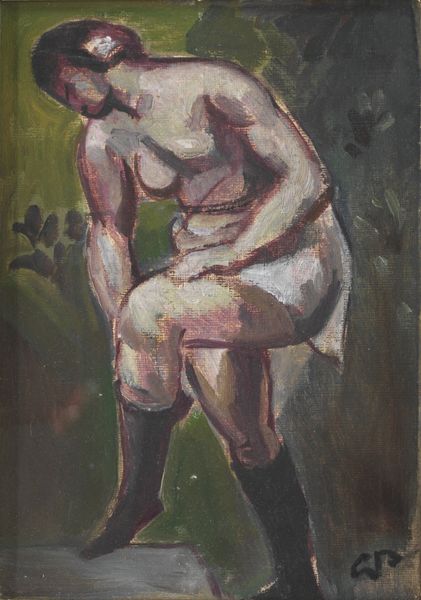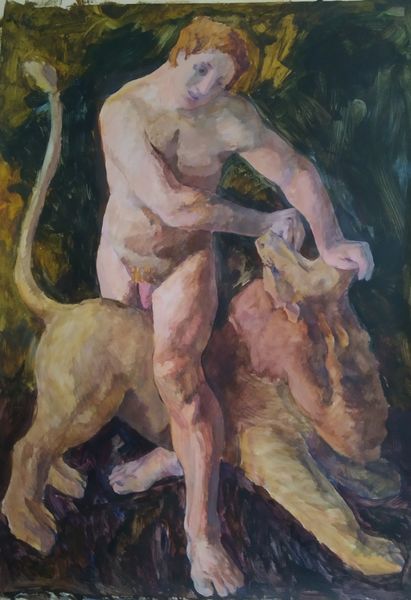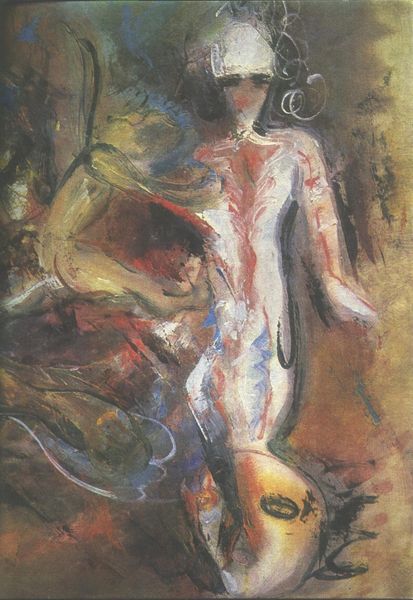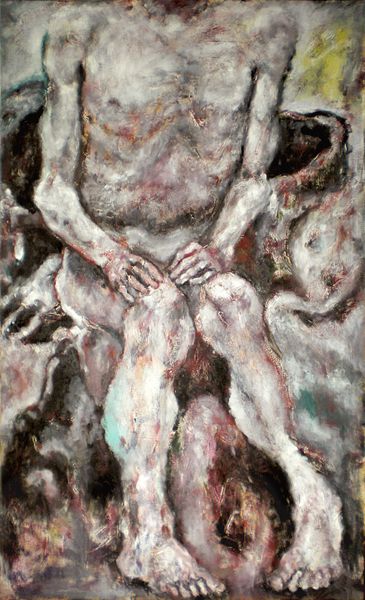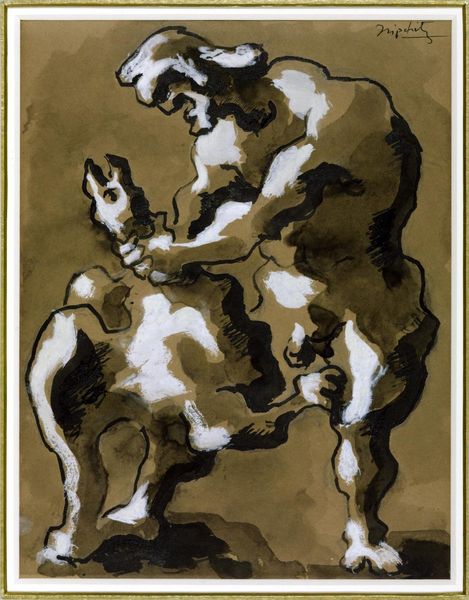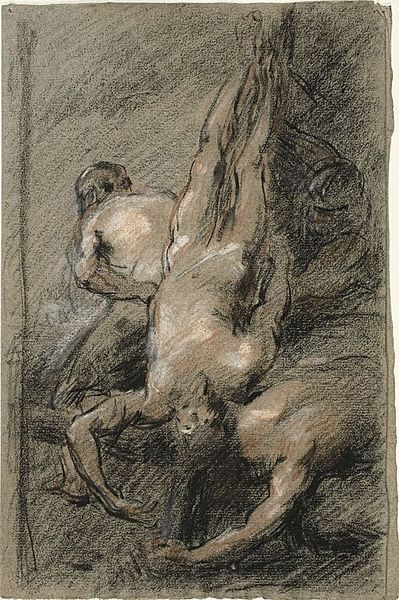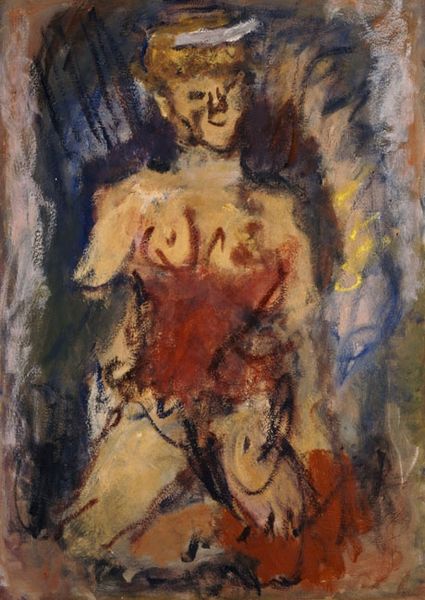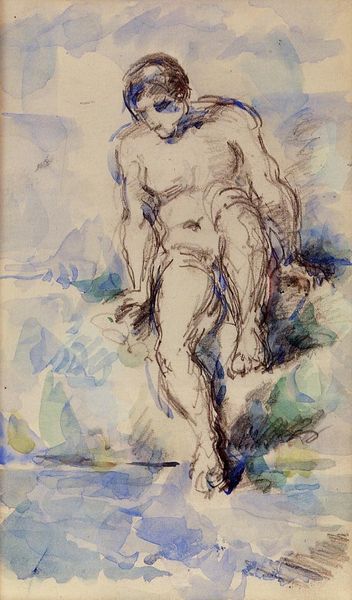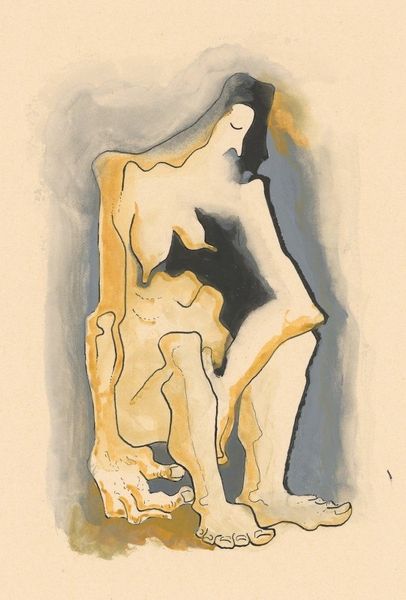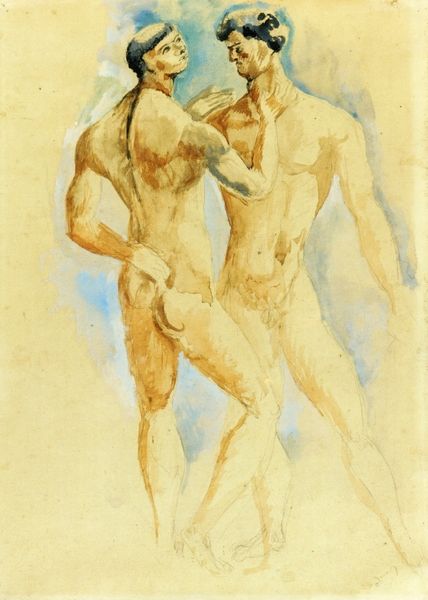
painting, watercolor
#
portrait
#
painting
#
figuration
#
oil painting
#
watercolor
#
history-painting
#
post-impressionism
#
watercolor
Dimensions: 38 x 20 cm
Copyright: Public domain
Paul Cézanne painted "Medea" in watercolor to capture a figure shrouded in infamy. Observe how the painting is structured around a palette of greens, from olive to verdant, contrasting sharply with the pale flesh tones of Medea and her children. Cézanne's brushstrokes are loose and gestural, almost dissolving the figures into the surrounding landscape. This technique, characteristic of his later work, serves to destabilize the conventional representation of classical subjects. The composition is less about narrative clarity and more about exploring the formal relationships between color and form. Note that the knife held by Medea seems almost incidental, blended into the overall texture of the painting. Cézanne challenges our expectations by prioritizing visual structure over dramatic storytelling. This subversion is not merely stylistic but engages with broader philosophical concerns about representation and perception. By focusing on the materiality of paint and the act of seeing, Cézanne invites us to reconsider the very nature of how we interpret the world around us.
Comments
No comments
Be the first to comment and join the conversation on the ultimate creative platform.

